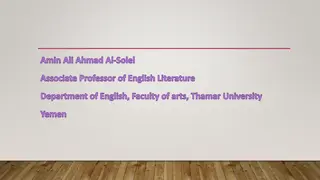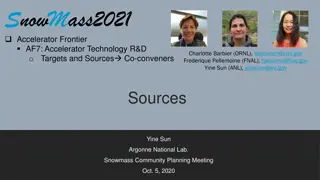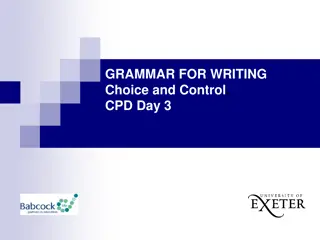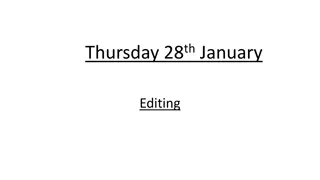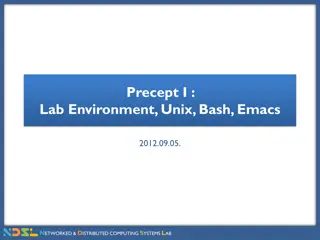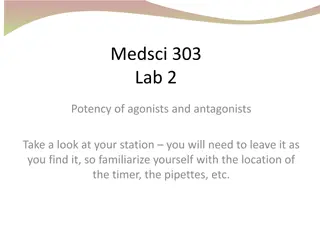
Effective Strategies for Using Sources in Academic Writing
Learn how to effectively integrate research sources into your writing by using strategies such as paraphrasing, summarizing, and quoting. Establish credibility and authority in your scholarly work by properly citing and referencing sources.
Download Presentation

Please find below an Image/Link to download the presentation.
The content on the website is provided AS IS for your information and personal use only. It may not be sold, licensed, or shared on other websites without obtaining consent from the author. If you encounter any issues during the download, it is possible that the publisher has removed the file from their server.
You are allowed to download the files provided on this website for personal or commercial use, subject to the condition that they are used lawfully. All files are the property of their respective owners.
The content on the website is provided AS IS for your information and personal use only. It may not be sold, licensed, or shared on other websites without obtaining consent from the author.
E N D
Presentation Transcript
Writing Skills Lab Using Sources
Learning Outcomes Define and evaluate using sources Identify the conventions of source integration Evaluate applications of paraphrase, summary, and quotation Identify the conventions of citation and references Establish credibility when using sources
Using Sources There are many different strategies for incorporating or integrating research sources into your writing. Direct quotation is only one of these strategies, and as you ll find out later in this module, you should actually try to limit its use. Your authority as a scholar will be enhanced when you demonstrate your ability to use and integrate outside sources in a fair and attentive manner. By doing so, you help to demonstrate that you have carefully read and considered the material on your topic. Your reader sees not only your ideas alone but also your points contextualized by the conversations of others. In this way, you establish yourself as one member of the community of scholars engaged with the same idea.
Bringing Sources into the Conversation Whether you use a direct quotation, a summary, or a paraphrase, it is important to distinguish source material from your own ideas and to explain how the cited source fits into your argument. You can think of this process as a sandwich with multiple parts. You ll want to: transition into and introduce the source, use a signal phrase to actually move into the material from the source, provide a citation that can be easily connected to the full citation material in your bibliography or works cited list, and explain how this material fits into your argument.
Paraphrase, Summary, and Quotation Now that you ve thought about source integration broadly, it s time to explore the three main tools for integrating source content into your own writing: paraphrase, summary, and quotation. You ve probably used direct quotation in your papers before, but did you know that you should only use quotations in your paper under certain conditions? Did you know that summary and paraphrase of source material, like direct quotation, should be cited?
Paraphrase and Summary What Does Paraphrase Look Like? Paraphrases should begin by making it clear that the information to come is from your source. If you are using MLA format, you should include the author s last name and the page number of the paraphrased content in a parenthetical citation. What Does Summary Look Like? Summarizing involves condensing the main idea of a source into a much shorter overview. A summary outlines a source s most important points and general position. When summarizing a source, it is a good idea to use a citation to give credit to the original author. You should reference the author or source in the appropriate citation method at the end of the summary.
What Does Quotation Look Like? Direct quotations are words and phrases that are taken directly from another source and then used word-for-word in your paper. Some tips: Avoid using long quotations merely as space-fillers. Try not to use too many direct quotations. Use a variety of verbs in your signal phrases. Some valid reasons for quoting include: When not using the author s exact wording would change the original meaning To lend authority to the point you are trying to make When the language of the quote is significant
Using Sources Checklist Writers use direct quotations: sparingly and when the original language has a strong impact with set-up, context, and proper citation followed by commentary, analysis, or explanation Writers use paraphrase: to contextualize the information (who said it, when, and where) to restate all the supporting points to develop the main idea of the original text to share important information from the source while maintaining their own voice Writers use summary: to contextualize the information (who said it, when, and where) by condensing the source to its the main ideas and without using quotations or citing specific supporting points of the passage to support their claims
Formatting the Works Cited Section In MLA style, all the sources you cite throughout the text of your paper are listed together in full in the Works Cited section, which comes after the main text of your paper. Page numbers Title Spacing Alphabetical order Hanging indents
In-class Activity The misplacement of these simple punctuation marks is one of the most common errors students make when crafting in-text citations. What are the errors in each of these citations and how would you advise the writer to fix it? Margaret had never spoken of Helstone since she left it. (Gaskell 100) Margaret had never spoken of Helstone since she left it (Gaskell, 100). Margaret had never spoken of Helstone since she left it (Elizabeth Gaskell 100). Margaret had never spoken of Helstone since she left it (North and South 100).
Establishing Source Credibility Writers are delighted when they find good sources because they know they can use those sources to make their writing stronger. Skillful integration of those sources adds to an argument s persuasiveness but also builds the credibility of the argument and the writer. Well-integrated sources build credibility in several ways. First, the source material adds evidence and support to your argument, making it more persuasive. Second, the signal phrase highlights the reputation and qualifications of the source, thereby adding to the source material s credibility. Third, effective citation makes it easy for your reader to find and investigate the original source, building your credibility as a trustworthy writer. Finally, your thorough explanation of the source s relevance to your argument demonstrates your critical thinking and reasoning, another avenue to increased credibility.
Markers of Credibility in Writing Think about your strategy for maintaining credibility and authority in your own writing: you will most likely rely on all four markers in some combination. Signal phrases Complete and accurate citations Demonstration of relevance Supporting evidence
Quick Review As you apply the knowledge learned from this section, be sure to keep the following principles in mind: Determine whether paraphrase, summary, or direct quotation works best for your purposes. Clearly introduce source material. Make sure source material is integrated smoothly into your work and that your voice remains in control. Understand the context of your source material, and be confident that it adds value (don t use a quotation simply to add a source). Pay attention to detail with in-text citations and works cited pages. Remember, your readers see not only your ideas alone but also your points contextualized by the conversations of others. In this way, you establish yourself as one member of the community of scholars engaged with the same idea.


